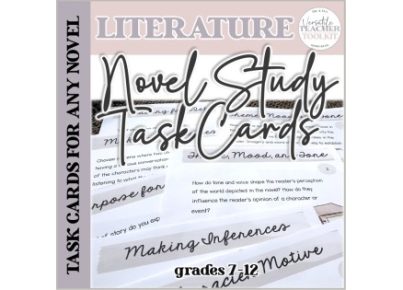The world is filled with various forms of information-rich texts, ranging from newspaper articles, research papers, and technical manuals to online blogs and social media posts. With the increasing availability of diverse informational texts, it’s crucial for educators to implement strategies that help students develop close reading skills. This article will discuss the importance of incorporating informational text into close reading instruction and provide useful tips for achieving this integration in the classroom.
The Importance of Informational Text in Close Reading
Informational texts play a significant role in student learning as they expose students to different types of content and encourage critical thinking skills. Engaging with informational texts enables students to analyze complex issues, form opinions based on evidence, compare multiple perspectives, and apply their findings within and beyond the classroom context. Moreover, mastering informational text comprehension plays a critical part in preparing students for college-level reading and their future careers.
Strategies for Integrating Informational Text into Close Reading Instruction
1. Select relevant and engaging texts: To foster interest and curiosity among students, it’s important to choose a variety of age-appropriate informational texts that appeal to diverse interests. These texts should also align with curriculum standards and build on students’ prior knowledge.
2. Develop text-dependent questions: To promote close reading and analytical thinking, design instructional activities that require students to examine textual evidence in order to answer questions about a particular topic or concept. By structuring these questions in a scaffolded manner (from basic recall to higher-order thinking), teachers can gradually guide students toward deeper understanding.
3. Model annotation techniques: Teach students how to actively engage with the text by using annotation strategies. These may include highlighting (or underlining), jotting down notes or questions in the margins, or using symbols to indicate connections between ideas.
4. Encourage group discussions: Provide opportunities for learners to share their thoughts, understanding, and interpretations about the text with their peers. Group discussions not only consolidate learning but also allow students to develop listening and speaking skills by justifying and defending their perspectives.
5. Teach vocabulary skills: Strengthen students’ vocabulary knowledge by encouraging them to identify and explore unfamiliar words and phrases in context. This skill will aid in decoding the meaning of complex texts, improving overall comprehension.
6. Make connections to other texts and disciplines: Foster interdisciplinary understanding by guiding students to compare and contrast themes, ideas, or concepts across different informational texts or subject areas. This approach can reinforce connections between various disciplines, deepening the overall understanding of a topic.
Conclusion
Incorporating informational text into close reading instruction not only develops essential literacy skills, but also prepares students for academic success and beyond. By selecting engaging texts, designing compelling questions, modeling annotation techniques, encouraging group discussions, teaching vocabulary skills, and making interdisciplinary connections, educators can enrich the learning experience while fostering critical thinking and analysis.





